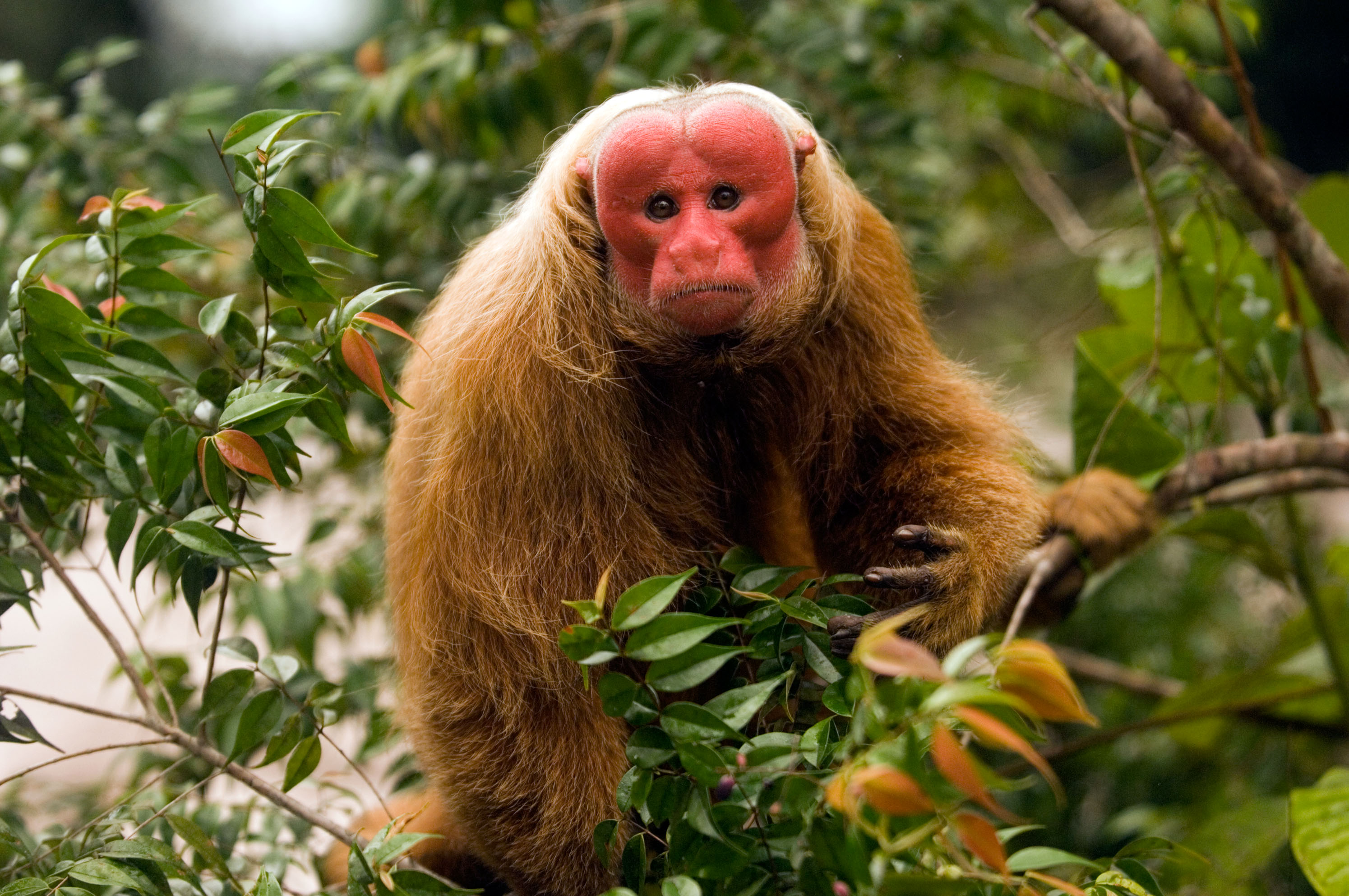Uakari << wah KAHR ee >> is a type of South American monkey noted for the hairless, bright red faces of some adults. Uakaris live in the western Amazon rain forest. The monkeys weigh an average of about 6 1/2 pounds (3 kilograms), with males somewhat larger than females. They have long fur that can be white, brown, black, or red. Unlike most other monkeys, uakaris have short tails.
Scientists recognize two species (kinds) of uakari. The bald-headed uakari, often called the red uakari, lives in western Brazil, southern Colombia, and eastern Peru. Adults of this species have peculiar, hairless faces with bright red skin and humanlike ears. The black-headed uakari lives in northwestern Brazil, southeastern Colombia, and southern Venezuela. These monkeys have black skin and shaggy hair covering the head and body.

Uakaris live in areas of the rain forest that are flooded for part of the year. Some uakaris migrate to other areas of the forest during the dry season.
Uakaris eat fruit, seeds, leaves, insects, and small animals. They commonly search for sprouting seeds on the ground in areas where there are no large predators (hunting animals). The monkeys usually live in groups of about 20 to 50 individuals, with a similar number of males and females in each group. Each group wanders over a large area called its home range and may travel 3 miles (5 kilometers) a day searching for food. Like other monkeys, groups of uakaris studied in captivity have dominance hierarchies. That is, each member of the group has a social rank. This rank is determined by the ability of individuals to win conflicts. 
Uakaris are endangered by hunting and loss of habitat. People capture uakaris as pets and hunt the black-headed uakari for food. The harvesting of timber destroys parts of the rain forest where uakaris live.
